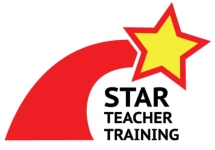Are your voices getting tired yet? I lost mine a few times my first semester teaching ESL in public primary schools because I didn’t have any attention routines. These are quick, practiced signals that you can use to focus students on yourself without shouting. They’re an important part of basic ESL classroom management. Take the time to read below and choose one. Using it regularly before giving instructions or when you’ve lost your students’ attention will save your voice, your energy, your time and your sanity.
Happy Claps Attention Routine
This is my favorite attention routine. I simply clap a series of patterns for my students to repeat. I’ll clap to the left, to the right, up, then down, or in an arch. Other teachers clap in rhythms. Either way, keep clapping a couple rounds until everyone is focused on you. Happy Claps are great because they don’t use your voice, they can be a bit silly (slap a beat on your stomach or head), and the physical actions easily catch attention.
Counting, Call and Respond Attention Routines
Many teachers hold up a hand and count down from five until everyone is quiet. This was the first routine I learned, and it’s still popular in many classrooms. Other teachers chant “One, two, three, eyes on me.” and their students respond “One, two, three, eyes on you!” while they point at the teacher. The pointing helps teachers see who is on track and who is still lost.
An awesome counting attention routine for Very Young Learners is the “Potato Count,” from Alistair Jones. Put your hands in fists, one on top of the other, and count up to three, five or ten; “One potato, two potatoes, three potatoes…,” while the students repeat after you. Alistair Jones uses his quietly as a settler, but I made some changes to catch my students’ attention and then settle them. I use different voices (robot, pirate, monster, etc) and matching motions throughout the count. For example, I’ll nearly shout out “ONE POTATO” as I swing my fist around and then switch through other voices until everyone is focused on me. The count always ends in a whisper to lower the class’s overall energy levels and settle them.
Bells, Whistles, Toys and More
There are all sorts of objects you can bring into the classroom with you as props for your Attention Routines. I’ve seen teachers use bells and whistles for saving their voice and cutting through the noise. Very Young Learners can be taught to be quiet when a certain puppet or stuffed animal is held up. Some teachers also do great just by holding their finger to their mouth and their other arm in the air.
Using Attention Routines Effectively
Whichever attention routine you use, train your students and be consistent. Practice it at the start of every lesson so it’s fresh and ready for when it’s needed. Don’t skip the practice and then suffer in a tough spot.
Avoid frequently changing routines, using different attention routines in the same lesson or shouting – that will all confuse your students. Consistency creates effectiveness.
I find that these all work best when they’re done enthusiastically to attract students’ attention – not demand it. Happy and engaged students always participate better than when they’re forced to by an upset teacher.
You have to deserve and be ready for your students’ attention. Don’t make the common mistake of following up your routine with nothing interesting. Far too often I’ve seen teachers get their students’ attention and then hunt through their papers for 30 seconds. Their kids quickly learned to not bother with all the claps or counting. Get yourself and your materials ready before starting the routine.
Finally, if you use a Behavior Management System then you can reinforce both by rewarding your students when they successfully follow the Attention Routine.
What Attention Routine do you use in your classes? Please like, share, and comment below.






